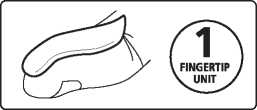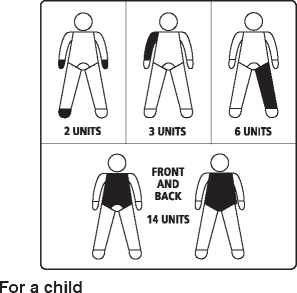Betamethasone Valerate/Neomycin Sulphate 1 Mg/5 Mg/G Cream
35 x 60mm text free area
ESSENTIAL GENERICS
204351 98B/L/m/4
Read all of this leaflet carefully before you start using this medicine.
• Keep this leaflet. You may need to read it again.
• If you have any further questions, ask your doctor or pharmacist.
• This medicine has been prescribed for you. Do not pass it on to others. It may harm them, even if their symptoms are the same as yours.
• If any of the side effects get serious, or if you notice any side effects not listed in this leaflet, please tell your doctor or pharmacist.
In this leaflet:
1. What this medicine Is and what It Is used for
2. Before you use Betamethasone/Neomycln Cream
3. How to use Betamethasone/Neomycln Cream
4. Possible side effects
5. How to store Betamethasone/Neomycin Cream
6. Further information
Betamethasone/Neomycin Cream contains two different medicines called betamethasone valerate and neomycin sulphate.
• Betamethasone valerate belongs to a group of medicines called steroids. It helps to reduce swelling and irritation.
• Neomycin sulphate is a type of anti-infective medicine. It fights bacterial infections of the skin.
This medicine is used to help reduce the redness and itchiness of certain skin problems. These skin problems include eczema, psoriasis, dermatitis or insect bites, where an infection may be a problem.
• you have psoriasis, your doctor will want to see you more often
• you have kidney problems, your doctor may decide to change the amount or number of times you apply the cream.
If you are not sure if any of the above apply to you, talk to your doctor or pharmacist before using this medicine.
Taking other medicines Please tell your doctor or pharmacist if you are taking or have recently taken any other medicines. This includes medicines obtained without a prescription and herbal products.
If Betamethasone/Neomycin Cream is absorbed into the body in large amounts, the effects of medicines used to relax muscles during surgery can last longer or even be increased. If you are having surgery you should tell the doctor that you have used Betamethasone/Neomycin Cream.
Pregnancy and breast-feeding
Talk to your doctor or pharmacist before using this medicine if you are pregnant, might become pregnant or are breast-feeding.
on front top right only
Do not use Betamethasone/Neomycin Cream:
• if you are allergic (hypersensitive) to betamethasone valerate, neomycin sulphate or any of the other ingredients (listed in Section 6)
• on a child under 2 years old
• to treat any of the following skin problems, it could make them worse:
- acne
- severe flushing of skin on and around your nose (rosacea)
- spotty red rash around your mouth (perioral dermatitis)
- itching around your back passage or private parts - unless your doctor has told you to do so
- viral infections, such as cold sores, herpes or chicken pox
-fungal infections, such as ringworm, athletes foot or thrush
- skin blisters or sores that are caused by an infection
- outer ear infections.
Do not use if any of the above apply to you. If you are not sure, talk to your doctor or pharmacist before using this medicine.
Take special care with Betamethasone/ Neomycin Cream
Check with your doctor or pharmacist before using your medicine if:
• you are applying the cream under an airtight dressing, including a child's nappy. These dressings make it easier for the active ingredient to pass through the skin. It is possible to accidentally end up using too much cream
Always use the cream exactly as your doctor has
told you. You should check with your doctor or
pharmacist if you are not sure.
Using this medicine
• You usually apply the cream 2 or 3 times a day. This may be reduced as your skin begins to get better.
• If your skin problem does not improve after 7 days talk to your doctor.
• This cream is for use on your skin only.
• Do not use on large areas of the body for a long time (such as every day for many weeks or months) - unless your doctor tells you to.
• The germs that cause infections like warm and moist conditions under dressings so always clean the skin before a fresh dressing is put on.
• If you are applying the cream on someone else make sure you wash your hands after use or wear disposable plastic gloves.
• Do not mix with any other creams or ointments.
Guidance on how to apply the cream
1 Wash your hands.
2 Gently rub the correct amount of cream into the skin until it has all disappeared. You can measure how much cream to use with your fingertip. This picture shows one fingertip unit.

3 Unless you are meant to apply the cream to your hands as a part of the treatment, wash them again after using the cream.
Please turn over the page
For an adult
You should find that:
• two fingertips of cream will cover both hands or one foot
• three fingertips of cream will cover one arm
• six fingertips of cream will cover one leg
• fourteen fingertips of cream will cover the front and back of the body.
Do not worry if you find you need a little more or a little less than this. It is only a rough guide.

• Do not use it on children under 2 years of age.
• The smaller the child the less you will need to use.
• A child of 4 years needs about a third of the adult amount.
• A course of treatment for a child should not normally last more than 5 days, unless your doctor has told you to use it for longer.
If you have psoriasis
If you have thick patches of psoriasis on your elbows or knees, your doctor may suggest applying the cream under an airtight dressing. It will only be at night to help the cream to start working. After a short period of time you will then apply the cream as normal.
If you apply Betamethasone/Neomycin Cream to your face
You should only apply the cream to your face if your doctor tells you to. The cream should not be used for too long as the skin on your face thins easily. Do not let the cream get into your eyes. If it does, wash it out with plenty of water.
If you use more Betamethasone/Neomycin Cream than you should
If, by mistake on a few occasions you use more than you should, do not worry. If you apply a lot or if a lot is accidentally swallowed, it could make you ill. Talk to your doctor or go to hospital as soon as possible.
If you forget to use Betamethasone/Neomycin Cream
If you forget to apply your cream, apply it as soon as you remember. If it is close to the time you are next meant to apply it, wait until this time.
If you stop using Betamethasone/Neomycin Cream
If you use this medicine regularly make sure you talk to your doctor before you stop using it.
If you have any further questions on the use of this product, ask your doctor or pharmacist.
Other side effects you may notice when using Betamethasone/Neomycin Cream include:
• a feeling of burning, irritation or itching where the cream is applied
• if you have psoriasis you may get raised bumps with pus under the skin. This can happen during or after the treatment and is known as pustular psoriasis.
Side effects if you use Betamethasone/Neomycin Cream for a long time, or you use a lot each time you apply it, or you apply it under an airtight dressing or a nappy:
• stretch marks may develop
• veins under the surface of your skin may become more noticeable
• increased hair growth and changes in skin colour
• thinning of your skin and it damages more easily
• weight gain, rounding of the face and high blood pressure. These are more likely to happen in infants and children.
If you absorb or swallow Betamethasone/Neomycin Cream in large quantities, it can affect your hearing, nerves and kidneys. This is unlikely when you use the cream normally.
Reporting of side effects If you get any side effects, talk to your doctor, pharmacist or nurse. This includes any possible side effects not listed in this leaflet. You can also report side effects directly via the Yellow Card Scheme at: www.mhra.gov.uk/yellowcard By reporting side effects you can help provide more information on the safety of this medicine.
• Keep out of the reach and sight of children.
• Do not use this product after the expiry date on the tube or carton (Exp). The expiry date refers to the last day of that month.
• Do not store above 25°C.
• Medicines should not be disposed of via wastewater or household waste. Ask your pharmacist how to dispose of medicines no longer required. These measures will help to protect the environment.
Like all medicines, Betamethasone/Neomycin Cream can cause side effects, although not everybody gets them.
STOP using this medicine and tell your doctor as soon as possible if:
• you find that your skin problem gets worse or becomes swollen during treatment. You may be allergic to the cream or need other treatment.
What Betamethasone/Neomycin Cream contains
• The active ingredients are betamethasone valerate and neomycin sulphate. Each 1 g contains 1 mg of betamethasone (0.1% w/w) as valerate and 5 mg of neomycin sulphate (0.5% w/w).
• The other ingredients are:
chlorocresol, cetomacrogol 1000, cetostearyl alcohol, white soft paraffin, liquid paraffin, sodium acid phosphate, phosphoric acid, sodium hydroxide and purified water.
What Betamethasone/Neomycin Cream looks like and contents of the pack
Within each carton is a tube with a plastic screw cap, which contains 30 or 100 g of cream.
Not all pack sizes may be marketed.
Marketing Authorisation Holder
Essential Generics, 7 Egham Business Village, Crabtree Road, Egham, Surrey TW20 8RB, United Kingdom.
Manufacturer
Purna Pharmaceuticals NV, Rijksweg 17,
2870 Puurs, Belgium.
This leaflet was last revised in
06/2015.
98B/L/m/4 204351 ESSENTIAL GENERICS